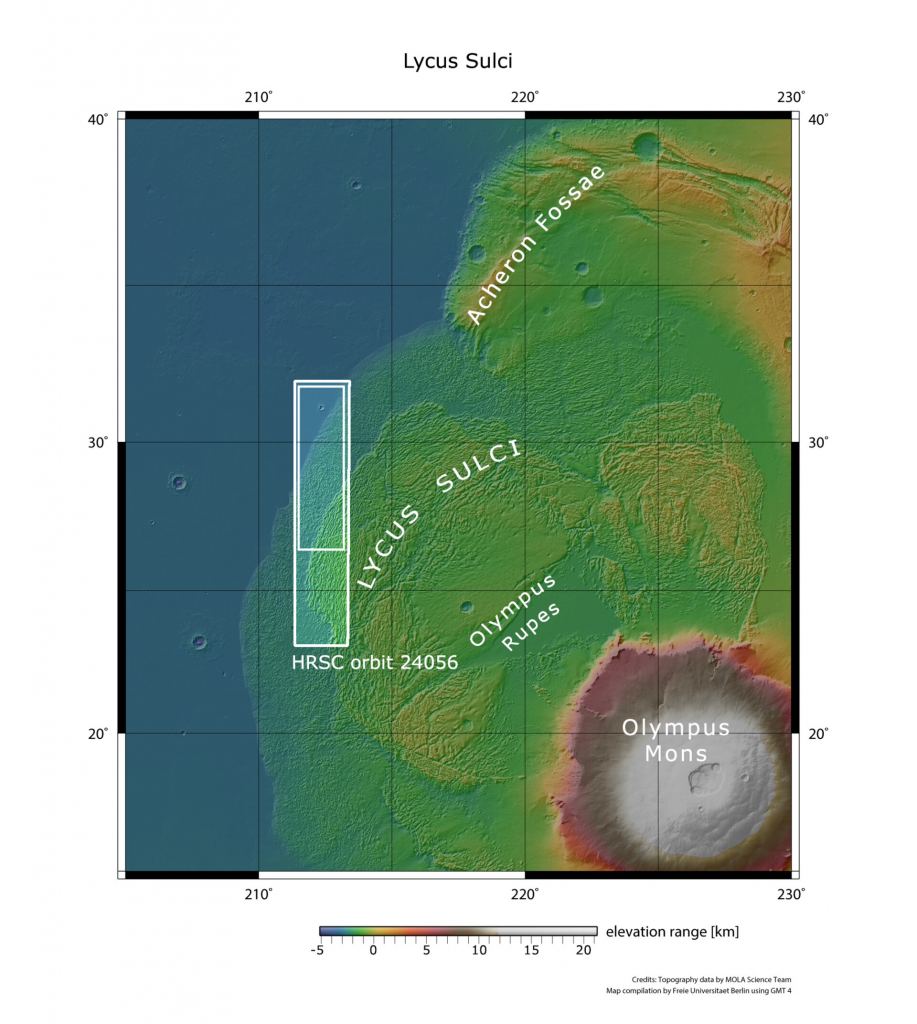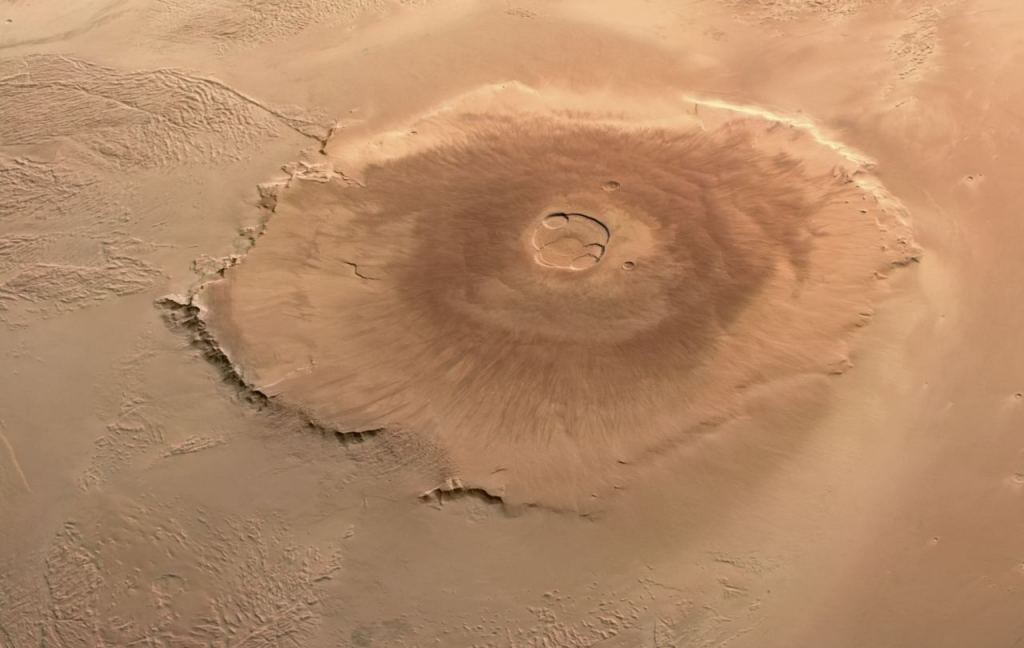While the surface of Mars looks relatively unchanging now, it wasn't always so. The tallest mountain in the Solar System is Olympus Mons, a giant shield volcano on Mars that reaches 21.9 km (13.6 miles) high, 2.5 times higher than Mount Everest here on Earth. Ancient lava flows surround the volcanic caldera, evidence of an active time.
New images from ESA's Mars Express show how these lava flows created extremely sharp cliffs, as high as 7 km (4.3 miles) in some areas, which suddenly collapsed in mind-boggling landslides. One of these landslides occurred several 100 million years ago when a chunk of the volcano broke off and spread across the surrounding plains. If we could look back in time and see as it happened, it was certainly a very dramatic and turbulent epoch on Mars.
The images, from Mars Express' High Resolution Stereo Camera (HRSC), show a crumpled feature named Lycus Sulci, on the edges of the aureole; the volcano itself is located out of frame to the bottom left in the image above -- (south-east), many hundreds of km away, but visible in the images below.
Combining the new images with data with topographical data from NASA's Mars Orbiter Laser Altimeter helps tell the ancient story of how Olympus Mons's lower flanks catastrophically collapsed several 100 million years ago. ESA scientists say that large amounts of lava once flowed down the volcano, triggering landslides that tumbled down its flanks to meet bedrock – in this case, bedrock containing ice and water.
The steaming hot lava caused the ice to melt and become unstable; as a result, the rocky rim of Olympus Mons broke off and partially slid away. This collapse came in the form of huge rockfalls and landslides, which slipped downwards and spread widely across the surrounding plains. As the landslides traveled across the landscape, they crumpled and pulled apart, created a wrinkly-looking surface. Later, fierce Martian winds whipped across the hardened lava flows and sculpted them into the softened wrinkles we see today in Lycus Sulci.
Scientists also see these features on Earth, although not as gigantic and widespread as on Mars. Comparable but smaller landslides can be seen around the volcanic islands of Hawaii and the Canary Islands, which have seen large rockfalls in the past.
Mars Express has been sending us dramatic images of Mars since 2003. In addition to the images, it also maps minerals, identifies the composition and circulation of its tenuous atmosphere, and explores how various phenomena interact in the Martian environment.
Source: ESA
 Universe Today
Universe Today


